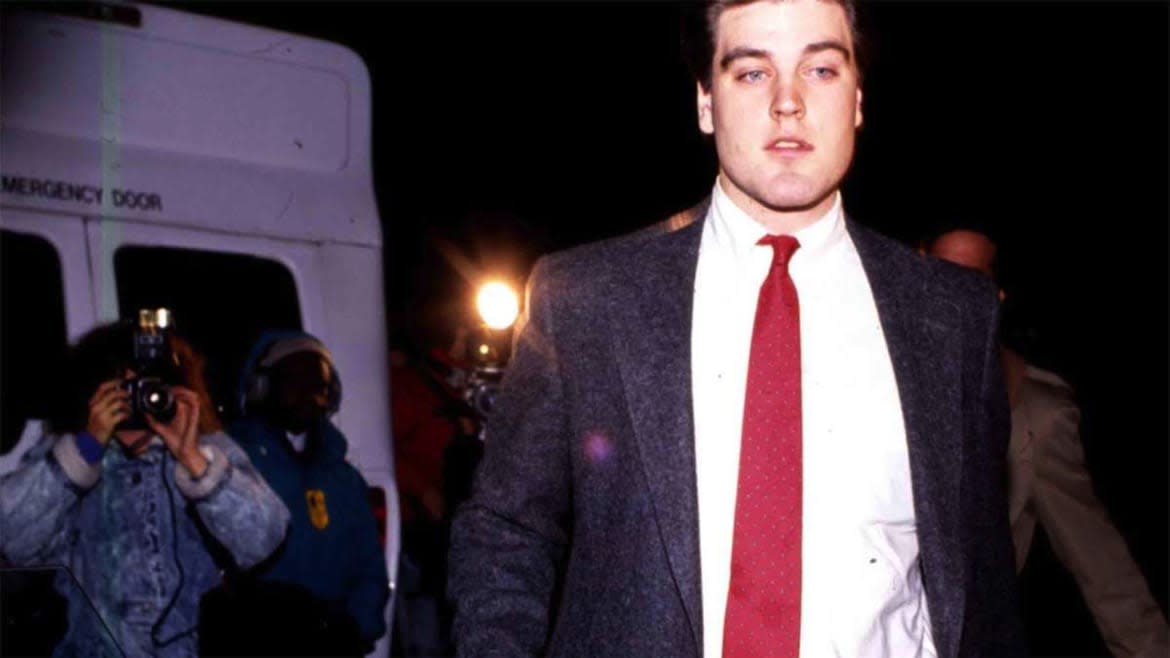The Preppy Murderer Who Cried Rape—and the Media Listened

To understand why the #MeToo movement is so necessary—and long overdue—look no further than The Preppy Murder: Death in Central Park, Sundance TV’s five-part documentary series about the 1986 death of Manhattan 18-year-old Jennifer Levin at the hands of her 19-year-old friend and occasional lover Robert Chambers. It was a case that rocked New York City, became daily tabloid headline fodder, and eventually attracted national attention, thanks to the fact that Levin and Chambers were attractive, well-off white kids, as well as Chambers’ claim that, though he had committed the crime, it was an accidental byproduct of Levin’s attempts to rape him. A circus ensued, fueled by a degree of sexist victim-blaming so severe that it’s stunning to remember that, as recently as 30 years ago, America could be so blind to, and/or simply comfortable with, the misogyny it was perpetrating.
Briskly directed by Ricki Stern and Annie Sundberg, The Preppy Murder—a three-night event debuting on Nov. 13 on both Sundance TV and AMC—takes a straightforward approach to its tale, beginning with the Aug. 26, 1986, discovery of Levin’s body under a tree in Central Park. It was clear from the deep bruising around Levin’s neck, and her numerous other wounds and scratches, that this was a homicide. And it didn’t take long for cops, led by detective Mike Sheehan, to find a suspect. Visiting the home of Robert Chambers, they discovered the 6-foot-4 young man with a face full of deep scratches. Brought in for questioning, Chambers chose to speak without a lawyer, and his videotaped explanation of what had transpired, replayed at length here, would form the basis for the prosecution and defense’s subsequent cases.
‘The Morning Show’: A #MeToo Screed Against Matt Lauer That’s Almost Great
Louis C.K. Is Going on a Big ‘Comeback’ Tour. He Hasn’t Earned His Forgiveness.
According to Chambers, he and Levin had met the prior evening at Dorrian’s, an Upper East Side bar that served as the de facto clubhouse for the area’s affluent prep-school crowd, who—despite residing in a crime-ridden 1980s New York—were habitually left to their own devices by absentee jet-setting parents. Following a row with his current 16-year-old flame Alex Kapp, Chambers stated that he had reluctantly left Dorrian’s with Levin and walked uptown to the park, where Levin, who’d previously slept with Chambers a few times, proceeded to tie his hands behind his back with her panties and mount him. Objecting to her belligerent advances, he had grabbed her around the neck and tossed her over his shoulder, resulting in her unintentional death. He’d sat stunned across the street until after her body had been found, and then gone home and fallen asleep until the police arrived.
Hearing Chambers’ preposterous version of events today, it’s hard to fathom how anyone could have bought it for a second. The notion that this strapping man had been physically assaulted by a petite woman rang false, as did the notion that this had all been an instance of unwanted “rough sex” that had gotten out of hand—an angle that became popularized by the sensationalist New York Post and New York Daily News. Furthermore, Chambers’ account didn’t jibe with the obvious and severe strangulation marks found on Levin’s corpse, which indicated that this attack had been prolonged and deliberate. Nonetheless, because the handsome Chambers looked like a member of the Kennedy clan, all chiseled good looks and well-heeled suits, the idea that someone like him (i.e. cultured, debonair, Caucasian) couldn’t have committed such an atrocity took hold, especially thanks to the media-manipulating efforts of his repugnant lawyer Jack Litman.
Through interviews with Levin’s mother Ellen, her sister Danielle, and other friends, The Preppy Murder puts the lie to the heinous character-assassination portrait of Levin that Litman and company promoted through one newspaper story after another. Their fury over Levin’s slut-shaming is matched only by their anguish over her loss and the ensuing ordeal of her public trial. What emerges is a clear-cut case of societal prejudice against women, and in particular, a young, carefree, independent teenager whose only crime was that she apparently wanted to sleep with a guy she liked. That was enough to open the floodgates to endless slander about her being a wild child who liked “rough sex” and kept a “sex diary.” Moreover, it afforded Chambers an opportunity to cast himself as a choir boy—literally, as he leaned heavily on the Catholic Church for support, to the point that Cardinal Thomas McCarrick even wrote a letter to the judge on Chambers’ behalf during his bail hearing.
If there’s a bombshell in The Preppy Murder—which is driven by a bounty of archival news footage and interviews with Sheehan, prosecuting DA Linda Fairstein (of Central Park Five notoriety), defense attorney Roger Stavis and local reporters Rosanna Scotto and Magee Hickey—it’s the suggestion that the church’s perplexing support of this cretin may have been the result of earlier sexual abuse by McCarrick, who was defrocked earlier this year for being a serial pedophile. There’s no concrete proof of that claim, unlike Chambers’ indisputable drug addiction and habit of burglarizing his ritzy acquaintances at every opportunity. As the show reveals, he was an impostor in this moneyed milieu—his mother, a nurse to New York’s elite, had shoehorned him into a lifestyle of the rich and famous—and a blank-faced sociopathic creep with no sense of accountability.

Jennifer Levin
Stern and Sundberg convey a potent sense of the privileged environment in which this tragedy took place, and recount their story with a clarity that brings the horror of it all home. Though there are occasional hiccups, such as soundbite-y comments from Fairstein and Sheehan used to segue into commercial breaks, the series gets the facts right, as well as the underlying sexism that turned the affair into a three-ring fiasco.
To say that Chambers’ first-degree guilt is obvious in hindsight is to imply that it wasn’t evident at the time, no matter that a deadlocked jury compelled attorneys to strike an outrageous plea deal that sent Chambers away for five to 15 years on a lesser manslaughter charge. That he’s still behind bars thanks to a later conviction for drug dealing at least means he’ll be off the streets until 2024. But the revelation that he received more time for that bust than for his killing of Levin simply underscores the twisted priorities of a society (and criminal justice system) that cared more about narcotics than the life of an innocent woman—and demonstrates why the feminist social movements of today remain so vital.
Get our top stories in your inbox every day. Sign up now!
Daily Beast Membership: Beast Inside goes deeper on the stories that matter to you. Learn more.

